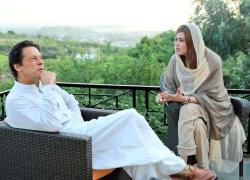How to choose the perfect Theoretical Framework for an Ethnographic Research Study?
Ethnographic research studies often draw on various theoretical frameworks to guide the study and provide a lens through which researchers can interpret and understand the collected data.
Which theory may be selected as a theoretical framework for an ethnographic research study, has always been perplexing. This blog post aimed to address this question. Here are some theoretical frameworks commonly used in ethnographic research studies, along with examples illustrating their application:
1. Symbolic Interactionism:
- This theory, associated with George Herbert Mead (1934), Herbert Blumer (1969), focuses on the symbolic meanings that individuals attribute to objects, events, and interactions. Ethnographers using symbolic interactionism explore how people create and interpret symbols within their social context.
- Used by researchers investigating how individuals within a religious community attribute symbolic meanings to rituals and how these meanings shape their interactions and shared identity.
- A researcher adopts symbolic interactionism to explore how individuals within a small community attribute meanings to shared symbols, rituals, and everyday interactions, shaping their social reality.
2. Cultural Ecology:
- This theory, associated with Julian Steward (1955) is derived from ecological anthropology, examines the relationship between culture and the environment. Ethnographers using this framework explore how cultural practices are influenced by and adapt to the physical and ecological characteristics of a given environment.
- An ethnographer applies cultural ecology to study the sustainable practices of a tribal community, investigating how their cultural adaptations align with and respond to the ecological features of their environment.
- Used by researchers, exploring how the cultural practices of a nomadic pastoralist community are shaped by their ecological environment and the ways in which they adapt to changing environmental conditions.
3. Structural Functionalism:
- Rooted in the works of Emile Durkheim (1893), structural functionalism views society as a complex system with interrelated parts that contribute to the stability and functioning of the whole. Ethnographers using this framework analyze how cultural practices serve specific functions within a society.
- In a study of a religious community, an ethnographer utilizing structural functionalism may examine how religious rituals and beliefs contribute to the social cohesion and stability of the community.
- Used by researchers, studying a traditional agricultural community to understand how various cultural practices and social institutions contribute to the stability and functioning of the community.
4. Postmodernism:
- Associated with the work of Jean-François Lyotard (1979), Postmodern theories, including poststructuralism and postcolonialism, challenge traditional views of reality and emphasize the subjective nature of knowledge.
- Ethnographers adopting a postmodern perspective often explore how power dynamics, language, and cultural representations shape individuals’ experiences.
- A researcher takes a postmodern approach to study how social media platforms contribute to the construction of individual identities, exploring the fluid and fragmented nature of contemporary self-representation.
- Used by researchers, investigating how online communities construct and deconstruct narratives about identity and belonging in a postmodern digital era.
5. Feminist Theory:
- Rooted in the works of Dorothy Smith (1987) feminist ethnography focuses on gender roles, power dynamics, and the experiences of women within a particular cultural context. This approach often seeks to uncover and challenge gender inequalities and illuminate the perspectives of marginalized groups.
- Using feminist ethnography, a researcher investigates the gendered experiences of women in a workplace, shedding light on issues of power, discrimination, and the negotiation of gender roles.
- Used by researchers, examining the experiences of women in a corporate setting to uncover the gendered power dynamics and the negotiation of identities within the workplace.
6. Critical Theory:
- Associated with the work of Max Horkheimer (1937) and Theodor Adorno (1969, critical theory emphasizes the examination of power relations, social structures, and ideologies that contribute to inequality and oppression. Ethnographers using critical theory may investigate how cultural practices either perpetuate or challenge existing power dynamics.
- A study employing critical theory might explore how educational practices in a multicultural setting either challenge or reinforce existing power structures and inequalities.
- Used by researchers, studying a multicultural educational setting to analyze how curriculum and pedagogical practices may perpetuate or challenge social inequalities and power structures.
7. Practice Theory:
- Grounded in the works of Pierre Bourdieu (1977), practice theory explores how social practices, habits, and rituals shape individuals’ perceptions and behaviors. Ethnographers employing practice theory focus on the everyday activities that contribute to the construction of culture.
- An ethnographer employing practice theory may study the daily routines and rituals within a residential community to understand how shared practices contribute to the construction of social norms and identities.
- Used by researchers, exploring the everyday practices within a community to understand how these practices contribute to the construction of social hierarchies and cultural distinctions.
8. Dramaturgical Approach:
- Borrowed from Erving Goffman(1959), the dramaturgical approach views social interactions as a form of theatrical performance. Ethnographers using this framework examine how individuals present themselves in different social settings and the role of performance in shaping cultural norms.
- In a study of a healthcare setting, an ethnographer using the dramaturgical approach may investigate how healthcare professionals present themselves in various clinical and non-clinical interactions, exploring the performative aspects of their roles.
- Used by researchers, investigating the interactions between healthcare professionals and patients in a hospital setting to understand the performative aspects of healthcare roles.
9. Agency and Structure:
- This framework, often associated with Anthony Giddens (1984), explores the interplay between individual agency (individual actions and choices) and social structure (institutional and cultural constraints). Ethnographers using this perspective investigate how individuals navigate and negotiate within societal structures.
- A researcher utilizing the agency and structure framework may study how individuals in a low-income community navigate economic challenges, examining the interplay between their agency and the structural constraints they face.
- Used by researchers, studying how individuals in a marginalized community exercise agency within the constraints of social structures to address economic challenges.
These examples demonstrate the versatility of theoretical frameworks in ethnographic research, allowing researchers to focus on various aspects of culture, identity, power dynamics, and social practices within specific contexts. However, it’s worth noting that these examples represent only a fraction of the diverse theoretical perspectives available for ethnographic research design. Researchers often choose a theoretical framework based on the nature of their research objectives and the specific cultural context they are exploring.
Conclusion:
It’s important for researchers to carefully select the theoretical framework that aligns with their research questions and goals. Additionally, many ethnographers may integrate elements from multiple theories to provide a more comprehensive understanding of the phenomena under study. Hence, the choice of theoretical framework depends on the research questions, the nature of the phenomenon under study, and the researcher’s philosophical orientation.
References:
- Adorno, T. (1969). Aesthetic Theory. University of Minnesota Press.
- Blumer, H. (1969). Symbolic Interactionism: Perspective and Method. University of California Press.
- Bourdieu, P. (1977). Outline of a Theory of Practice. Cambridge University Press.
- Durkheim, E. (1893). The Division of Labor in Society. Free Press.
- Giddens, A. (1984). The Constitution of Society: Outline of the Theory of Structuration. University of California Press.
- Goffman, E. (1959). The Presentation of Self in Everyday Life. Anchor Books.
- Horkheimer, M. (1937). Traditional and Critical Theory. In Critical Theory: Selected Essays (M. Horkheimer, Ed.). Continuum.
- Lyotard, J. F. (1979). The Postmodern Condition: A Report on Knowledge. University of Minnesota Press.
- Mead, G.H. (1934). Mind, Self, and Society from the Standpoint of a Social Behaviorist. University of Chicago Press: Chicago.
- Smith, D. E. (1987). The Everyday World as Problematic: A Feminist Sociology. Northeastern University Press.
- Steward, J. H. (1955). Theory of Culture Change: The Methodology of Multilinear Evolution. University of Illinois Press.


















